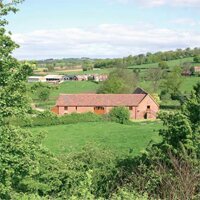Conversion of Traditional Farm Buildings: A guide to good practice


Traditional farm buildings are among the most ubiquitous of historic building types in the countryside. They are not only fundamental to its sense of place and local distinctiveness, but also represent a major economic asset in terms of their capacity to accommodate new uses. The restructuring of farming and other economic and demographic changes in the countryside provide both threats and opportunities in terms of retaining the historic interest of this building stock and its contribution to the wider landscape.
English Heritage and the Countryside Agency in collaboration with the University of Gloucestershire have developed a policy on the traditional farm building stock, set out in our joint statement Living Buildings in a Living Landscape. This explores options for the future use of traditional farm buildings, ranging from their repair or adaptation to encourage continued use in agriculture, to their conversion to wholly new functions. It emphasises the need to have regard to the historic and landscape significance of traditional farm buildings when taking decisions about their future use, and to ensure that, where conversion to a new use is agreed to be an appropriate option, design and implementation are carried out to a high standard.
This guidance provides more detailed advice by English Heritage on good practice in conversion projects for owners, designers, local authority conservation officers and others involved in projects of this type. An appendix is included which provides a decision-making framework to help inform options for sustainable reuse.
The PDF version of the document is available to download in two parts.
What's New?
-
The National Heritage List for England is now live on the English Heritage website.
-
Welcome to the HER21 page. This page offers access to the full suite of HER21 project reports.
